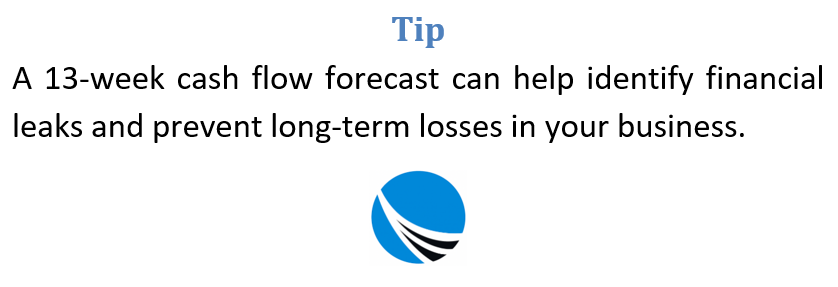Running a business involves navigating both high and low points. When profits dip or losses start mounting, the most critical action is to stay proactive. Rather than panic, treat the downturn as a cue to reassess how your operations are functioning. It’s possible that hidden inefficiencies, mispriced products, or outdated strategies are draining your resources without obvious warning signs. This article explores four smart, actionable strategies to help stabilize your business finances and regain profitability.

Track and Analyze Your Financial Flows
The first step in addressing financial trouble is understanding your cash flow in detail. Every business runs on a cycle of money in and money out—but sometimes, leaks or bottlenecks in this cycle are not immediately visible.
By implementing a structured cash flow review—preferably one that looks ahead 13 weeks—you can identify where funds are being delayed or misallocated. Separate fixed costs from variable ones, and break down income by source and timing. This type of forecasting can show you patterns, like slow-paying clients, seasonal revenue dips, or expenses that don’t align with income periods.
Once you’ve pinpointed cash flow irregularities, you can respond directly—perhaps by renegotiating vendor payment terms, reducing non-essential expenses, or adjusting billing cycles to accelerate income.
Rethink Your Pricing and Profit Margins
Another common but often overlooked issue is underpricing. It’s easy to assume more sales equals more profit, but if the margins are too slim—or worse, negative—you’re unknowingly losing money with every transaction.
To evaluate pricing, analyze each product or service line individually. Understand your direct costs and factor in all indirect expenses, such as delivery charges, packaging, customer support, and marketing. Often, hidden costs erode profit without you realizing it.
Adjusting pricing may feel risky, especially if you’re concerned about customer retention. But strategic price increases can lead to healthier margins and a more sustainable business—even if overall sales volumes decrease slightly. In some cases, operational changes, like altering logistics or packaging, can also widen margins without raising prices.
Don’t forget to review your customer segments. High-maintenance clients who pay less may be less profitable than those who require fewer resources but generate steady revenue. Streamlining these relationships can free up time and improve income.

Revisit and Renegotiate Your Business Agreements
Contracts are the framework of most business relationships—yet they often go unexamined once signed. When your business is losing money, it’s worth revisiting supplier agreements, service contracts, client terms, and employment commitments to uncover cost inefficiencies or outdated terms.
You may discover that some agreements lock you into unfavorable rates, long notice periods, or excessive obligations. If your performance obligations outweigh the benefits received, renegotiation could be in order. Many vendors are open to revisiting terms, especially if the partnership has long-term potential.
Additionally, ensure that your contracts reflect current business conditions. If you’ve expanded services or adapted operations in recent years, older agreements might not reflect the true scope of your current needs—or risks. Reviewing contracts also helps ensure you stay compliant with evolving laws and regulations, avoiding legal and financial pitfalls in the process.
Reevaluate Your Business Structure and Market Position
In some cases, the underlying issue might not be operational inefficiency or bad pricing, but the entire business model itself. Markets change—sometimes gradually, other times rapidly. Products or services that were in high demand a few years ago may no longer attract the same customer base.
When this happens, it may be time to innovate your approach. This doesn’t always mean a total overhaul. It could be a shift from business-to-business to business-to-consumer (or vice versa), moving from in-store to online sales, or bundling products differently.
Think of your business model as a flexible framework. If you spot declining demand in one channel, test a new direction. Perhaps there’s an emerging audience for your offering, or a better way to deliver your services that suits current market behavior.
Adaptation also includes physical resources. Downsizing underused office space, relocating to high-visibility areas, or reinvesting in digital tools may open new revenue streams and reduce costs.
Other Areas Worth Exploring
While the four strategies above address core structural issues, remember that many smaller factors can also affect profitability. Here are a few more areas to investigate:
- Overhead costs: Audit administrative expenses, subscriptions, or underused software. These can drain cash with little return.
- Customer service: Poor service impacts customer loyalty, which in turn affects revenue. Ensure you’re delivering a consistent, positive experience.
- Marketing efficiency: Are your campaigns yielding results? Shift budgets toward high-performing channels or rework messaging to better target ideal clients.
- Team productivity: Evaluate whether roles and responsibilities align with business goals. Streamlining staff structure can cut costs and improve output.
- Inventory management: Excess inventory ties up cash and may lead to obsolescence. Use data to forecast demand more accurately and avoid overstocking.
Knowing When to Seek Support
In some cases, external advice may be necessary. Financial advisors, turnaround consultants, or industry specialists can bring clarity and objectivity that’s hard to achieve internally. They might spot patterns or solutions you hadn’t considered, or help guide decision-making during critical turning points.
Likewise, don’t hesitate to explore financing options—if they’re part of a sustainable recovery plan. Short-term loans, credit lines, or grants can provide breathing room while you implement corrections. Just be cautious not to rely on debt to mask deeper problems.
Final Reflections
Every business encounters financial rough patches. What separates those that rebound from those that don’t is the willingness to assess, adapt, and act.
By understanding your cash flow, refining pricing, reevaluating contracts, and being open to structural change, you position your company to recover—and perhaps even come out stronger. The key is to treat loss as a signal, not a sentence. There’s no single reason a business loses money, but there are always multiple pathways to restore health.
Stay curious, ask hard questions, and be willing to shift. In the ever-evolving world of business, agility paired with insight is your greatest asset.
FAQs about Business Losses
What Is the First Step to Take When a Business Is Losing Money?
Begin by analyzing your cash flow to identify where money is coming in, where it’s going out, and where discrepancies may exist.
How Can Pricing Impact Business Profitability?
Mispriced products or services can lead to losses even with high sales. Adjusting pricing or reducing associated costs can improve margins.
Why Should Business Contracts Be Reviewed During Financial Struggles?
Outdated or unfavorable agreements can strain finances. Renegotiating terms or identifying legal risks can reduce expenses and liabilities.
When Should a Business Consider Changing Its Model?
If market demand shifts or your core offerings are no longer profitable, it may be time to explore a new business approach or structure.
What Other Areas Could Be Draining Profit?
Overhead costs, poor customer service, ineffective marketing, or excess inventory may silently affect the bottom line and require immediate attention.
Is External Help Worth Considering?
Yes, financial advisors or business consultants can provide objective insight and strategies that internal teams may overlook.
Can Borrowing Money Help Reverse a Downturn?
Short-term financing can help stabilize operations if used strategically and not as a cover for unresolved structural problems.

